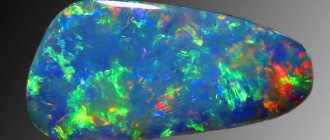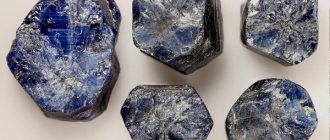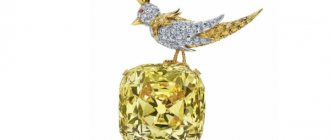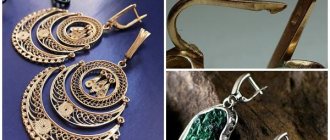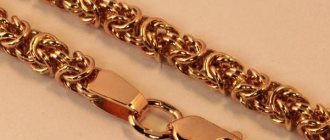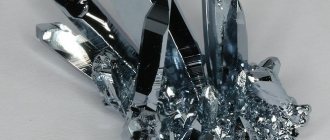When exporting from the customs territory of the EAEU some raw materials containing precious metals, you will need to issue a License.
The issuance of licenses for the import and export of goods is provided for by the Treaty on the Eurasian Economic Union.
In the Russian Federation, the authorized body responsible for issuing licenses for the import and export of goods is the Ministry of Industry and Trade of the Russian Federation (Minpromtorg of Russia). Therefore, such a license is often called “License of the Ministry of Industry and Trade” .
Sample License for the export of raw materials containing precious metals 905 KB
License for precious metals
From January 1, 2022, in order to continue the activities of all organizations involved in the processing and processing of scrap and waste of precious metals, it will be necessary to obtain a license.
The exception is for enterprises that carry out this activity for their own needs. The wording “processing and processing of scrap and waste of precious metals”, in accordance with current legislation, means the following: “extraction of precious metals from scrap and waste using metallurgical, chemical and mechanical processing methods and technological processes in order to obtain an intermediate product of metallurgical production.”
NP "KC Generation 8" has been providing consulting services since 1998. During this time, solid experience has been gained in licensing various types of activities. Accordingly, the company’s employees have sufficient qualifications to provide detailed support for licensing activities for processing scrap precious metals.
Certification of jewelry for children
A certificate is issued according to TR CU 007/2011 for a period from 1 to 5 years.
Depending on the scheme by which compliance with the requirements of the regulations is confirmed, the document can be issued both for a batch and for serially produced products.
Certification requires testing of product samples and production analysis.
The absence of a certificate is the basis for bringing entrepreneurs to administrative liability under Art. 14.43, 14.44, 14.45 Code of Administrative Offenses of the Russian Federation in the form of a fine (its amount can reach 600 thousand rubles), confiscation of goods, suspension of activities.
What is included in the service for obtaining a license for precious metals?
For Moscow:
- Oral and, if necessary, written consultation on licensing issues;
- Preparation of a set of documents for submission to the licensing authority;
- Submission of documents by our specialist to the licensing authority;
- Interaction with authorized persons of the licensing authority regarding the consideration of submitted documents;
- Representation of the client's interests in the licensing authority.
For regions:
- Oral and, if necessary, written consultation on licensing issues;
- Preparation of a set of documents for submission to the licensing authority;
- Interaction with authorized persons of the licensing authority regarding the consideration of submitted documents;
Cost and processing time
When applying for a license from the Ministry of Industry and Trade for the export of raw materials containing precious metals, our company’s specialists will first analyze the available information and, based on this data, will present you with the final cost of obtaining a license from the Ministry of Industry and Trade and the conclusion of the Ministry of Finance, if it has not been issued earlier.
The cost of obtaining a license depends on a number of factors:
- the presence or absence of an approval document from the Ministry of Finance (conclusion of the Ministry of Finance),
- number of product names in the license,
- required deadlines, etc.
The period for issuing a License by the Ministry of Industry and Trade is 5-7 working days from the date of submission of documents. If necessary, we can agree on expediting the issuance of the License.
Service provision procedure
In accordance with the agreement, the service is provided in stages:
- Stage 1 – includes an oral (if necessary written) consultation with the client on the current licensing requirements, the procedure for preparing and collecting the necessary documents, as well as an audit of the client’s documentation.
- Stage 2 – preparation of one set of documents for submission to the licensing authority (based on the information provided by the client). Submission of a set of documents to the licensing authority, interaction with authorized persons of the licensing authority regarding consideration of the application.
- Stage 3 – obtaining an extract from the license register (in fact, post-payment).
How to obtain a License?
To obtain a License for the export of raw materials containing precious metals, you must provide the following documents:
- application for a License;
- a copy of the contract (with appendices, additions to it);
- conclusion of the Russian Ministry of Finance;
- a copy of the certificate of registration with the tax authority;
- other documents as required by the Ministry of Industry and Trade.
It’s very easy to obtain a Ministry of Industry and Trade License with us:
Send us the available product description
We will analyze the characteristics of the product and make sure that: - the product falls into table 2 of section 2.10; — goods are imported on the basis of a License; — the documents you have allow you to issue a License.
We will draw up the documents necessary to obtain a License from the Ministry of Industry and Trade
We will send the completed statements and descriptions to you for signature. If required, we will also obtain for you the Conclusion of the Ministry of Finance necessary for obtaining a License.
Our specialists will submit documents to the Ministry of Industry and Trade
We control the process, contact the contractor on all questions that arise, give our answers regarding the submitted documents or imported (exported) goods.
We will receive the original License and deliver it to you (by courier or express delivery service)
As an additional service, we can register a License at customs in the region where you will undergo customs clearance. If you order the customs clearance service for this product from us, registration of the License is free of charge!
Write to us right now!
What documents are needed for a license?
To submit to the licensing authority, the following list is required:
- Constituent documents (Charter, TIN and OGRN (if any), order for the appointment of a manager, other documents);
- Documents for production premises;
- Documents for equipment;
- Documents for employees;
- Documents confirming compliance of the precious metals storage system with current requirements;
- A document confirming the fact of payment of the state fee for the provision of a license.
Independent examination of jewelry
How is an independent examination of jewelry carried out in St. Petersburg ? What is the cost and how long will it take to evaluate the product? SINEO specialists will answer these and other questions. We work in St. Petersburg and the Leningrad region. Qualitative examination will allow
- evaluate the product, the cost of jewelry when selling, donating, buying;
- demand compensation from the seller if defects are found;
- provide grounds for exchanging jewelry if the “jewelry” does not meet the stated quality standards.
Types of work with precious metals that require licensing
| Types of jobs | Required licenses/permits |
| Purchase of products made of precious metals and precious stones from individuals | License of the Federal Assay Office |
| Retail sale of products made of precious metals and precious stones | Registration with the Federal Assay Office |
| Processing of scrap precious metals | License of the Federal Assay Office |
| Procurement, storage, processing and sale of non-ferrous metal scrap; | License for activities for the procurement, storage, processing and sale of scrap ferrous metals, non-ferrous metals (various entities) |
| Procurement, storage, processing and sale of scrap ferrous metals; | License for activities for the procurement, storage, processing and sale of scrap ferrous metals, non-ferrous metals (various entities) |
| Mining of precious metals and gemstones | License for subsoil use (Federal Agency for Subsoil Use - ROSNEDRA) |
| Other activities related to precious metals and precious stones | Registration with the Federal Assay Office |
Stages and timing of transition to mandatory labeling of DMDK and jewelry
Based on the current legal regulation, the transition to compulsory work in the GIIS DMDK will take place in several stages:
- From March 1, 2021, the launch of voluntary registration and testing of functions in real conditions.
- From September 1, 2021 - the beginning of mandatory registration and work in the system in terms of:
- carrying out operations for special accounting of products;
- registration of names;
- entering information about the receipt of raw materials containing precious metals, shipment (sale) of refined precious metals, products made from them, waste and intermediate products.
- Until January 15, 2022, participants in the turnover are required to enter into the system information as of 01/01/2022 on the balances of precious metals, precious stones, jewelry and other products.
- Before April 1, 2022, participants in turnover are required to enter into the system updated data on product balances, taking into account the inventory results as of 01/01/2022 and product sales in the period 01/01/2022—03/31/2022. Organizations involved in the refining of precious metals are required to do the same before June 1, 2022, taking into account inventory data as of 01/01/2022 and sales in the period 01/01/2022–05/31/2022. By September 1, 2022, declared balances must be marked and have a label with a code.
- From March 1, 2022, mandatory labeling will be introduced:
- circulation of precious metals and precious stones is allowed only if there is a means of identification;
- circulation of jewelry, except for the declared balances, is allowed only if there is a marking code (unique identification number) and a label with the code.
- From March 1, 2023, mandatory labeling of jewelry begins, except for declared balances, with a code applied directly to the product.
- From March 2024, the final stage of introducing mandatory marking begins, during which declared balances must be marked, with a code applied directly to the product.
Currently, the government has prepared a draft Resolution, which plans to make some changes to Resolution No. 270. The changes will not affect the stages and timing of the introduction of mandatory labeling, but from September 1, 2021, market participants will have new responsibilities that must be taken into account in their work. From this date, only subject to the availability of information about the products in the GIIS DMDK, the following are allowed:
- testing, analysis and marking of jewelry with the state hallmark;
- passing state control when importing precious metals into Russia or exporting them abroad, except for the countries of the EAEU.
In addition, from September 1, 2021, in order to participate in special accounting operations for precious stones and precious metals, participants in the turnover are required to re-register paper special accounting cards in the GIIS DMDK.
Regulatory and legal framework
- Decree of the Government of the Russian Federation dated September 12, 2020 No. 1418 – licensing regulations;
- Order of the Federal Assay Office dated September 4, 2020 No. 91n – list of document forms submitted for a license;
- Decree of the Government of the Russian Federation of March 20, 2020 No. 307 – On the Assay Office;
- Chapter III Federal Law No. 41-FZ dated March 26, 1998 – On precious metals;
- Decree of the Government of the Russian Federation of September 28, 2000 No. 731.
Call now on +7 and order the service of obtaining a license for precious metals, or write by email. You can also use the application form by mail.
Nuances of confirming the conformity of jewelry
Jewelry certification is carried out to confirm that goods meet quality requirements.
Currently, this procedure is carried out exclusively on a voluntary basis. This is due to the fact that jewelry products are not included in the lists approved by Government Decree No. 982 and are not subject to the technical regulations of the EAEU. To confirm this fact, the following can be issued:
- or a letter of refusal;
- or a negative decision on the application.
The exception is gold, silver and platinum bracelets for children's watches. These items are subject to mandatory certification according to TR CU 007/2011. To produce, sell or import them, you will need to obtain a certificate.
How to obtain a certificate of conformity for jewelry?
The certification procedure is as follows:
- the entrepreneur contacts MOS RST to clarify the registration details;
- after this, documents are collected for transfer to experts;
- the quality of goods is examined according to the requirements of NTD - GOST or TU;
- the document layout is agreed upon with the applicant;
- the voluntary certificate is registered in the VTS register and transferred to the customer.
Conformity assessment is carried out according to the following characteristics:
- absence of defects: cavities, cracks, cutting edges that can injure the skin;
- pairing - for paired products - earrings, cufflinks and other quality indicators.


